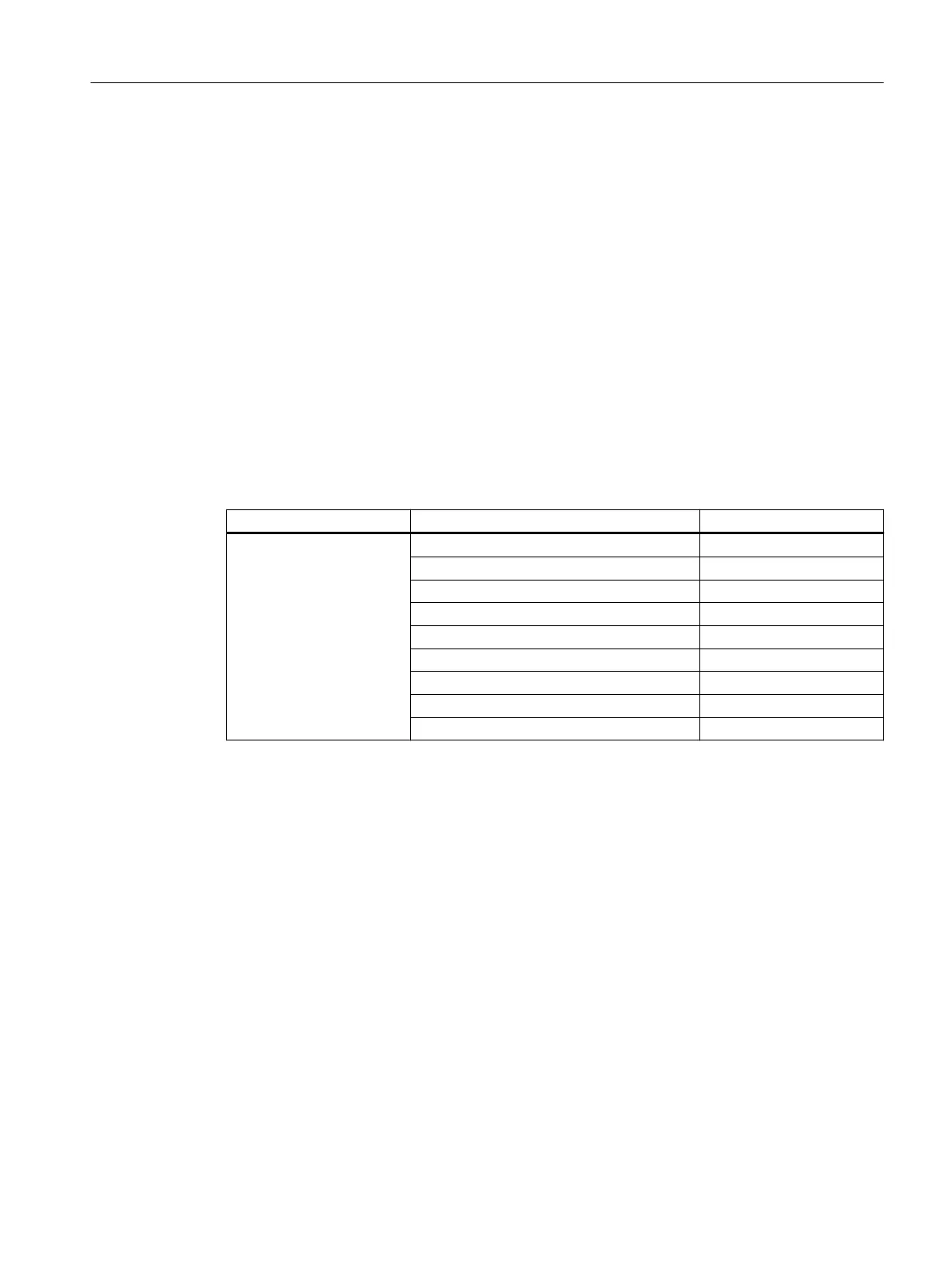Data storage: channel-specific base frames $P_CHBFR[<n>]
The frame variables $P_CHBFR[<n>] read/write the base frames in the data storage. The data
storage frame is not immediately active in the channel when written. The written frame is
activated with:
● Channel reset and MD20110 $MC_RESET_MODE_MASK, Bit0 == 1 and Bit14 == 1
● Command G500, G54 ... G57, G505 ... G599 (activation/deactivation of base frames with
subsequent recalculation of the current total frames)
Data storage: Channel-specific settable frames $P_UIFR[<n>]
The frame variables $P_UIFR[<n>] read/write the settable base frames in the data storage. The
frame is not immediately active in the channel when written. The written frame in the channel
is calculated with:
● G500 command (deactivate all settable frames or zero offsets)
● G54 ... G57, G505 ... G599 command (activate a settable frame or zero offset)
Active settable frame Data storage frame (corresponds to command)
$P_IFRAME = $P_UIFR[0] G500
$P_UIFR[1] G54
$P_UIFR[2] G55
$P_UIFR[3] G56
$P_UIFR[4] G57
$P_UIFR[5] G505
$P_UIFR[6] G506
... ...
$P_UIFR[99] G599
3.8.2 Value assignments to frames
3.8.2.1 Assigning direct values (axis value, angle, scale)
You can directly assign values to frames or frame variables in the NC program.
Syntax
Syntax
$P_PFRAME = CTRANS(X, <offset value>, Y, <offset value>, Z, <offset
value>, ...)
$P_PFRAME = ROT(X, <angle>, Y, <angle>, Z, <angle>, ...)
$P_UIFR[..] = CROT(X, <angle>, Y, <angle>, Z, <angle>, ...
$P_PFRAME = CSCALE(X, <scale>, Y, <scale>, Z, <scale>, ...)
Work preparation
3.8 Coordinate transformations (frames)
NC programming
Programming Manual, 12/2019, 6FC5398-2EP40-0BA0 633

